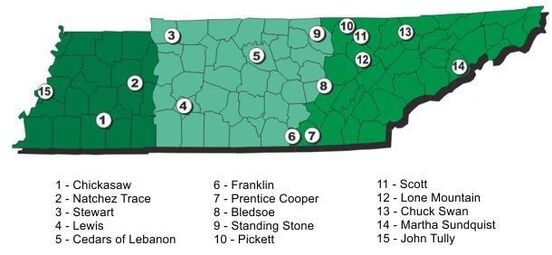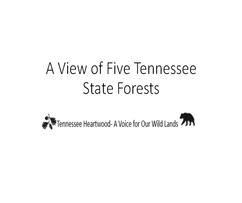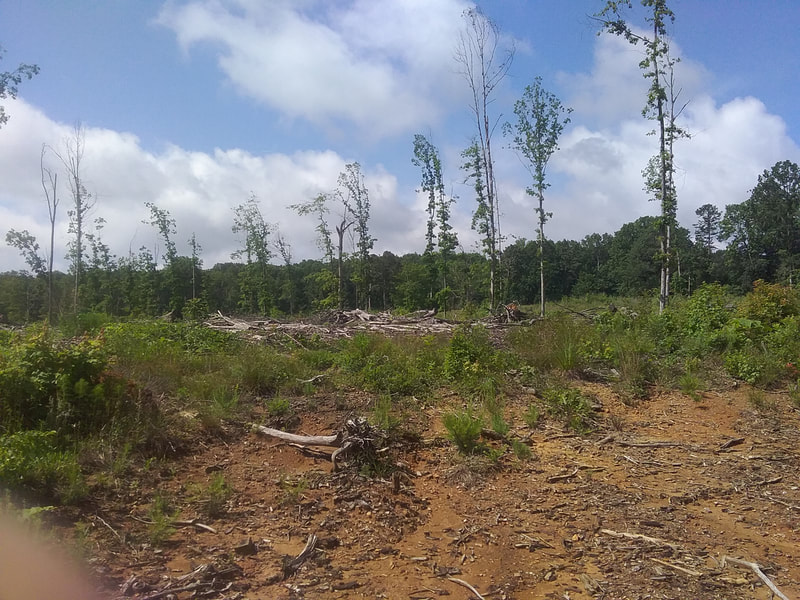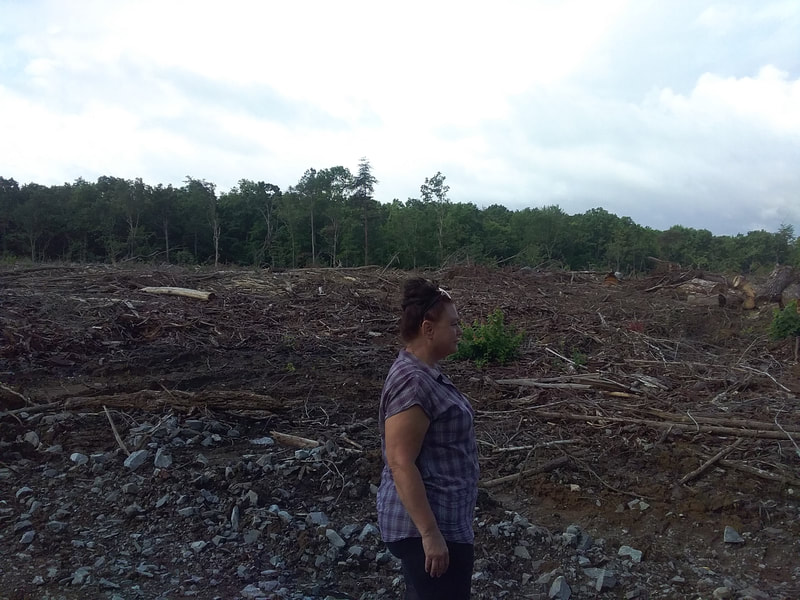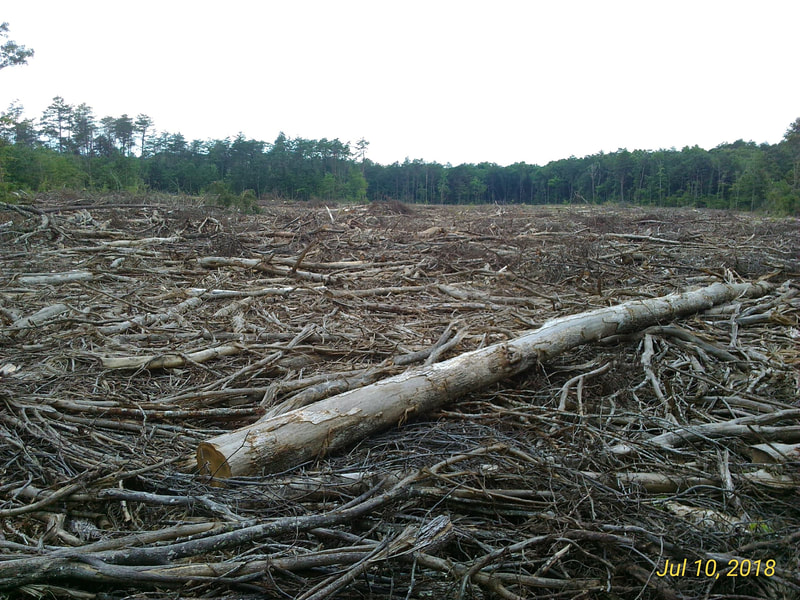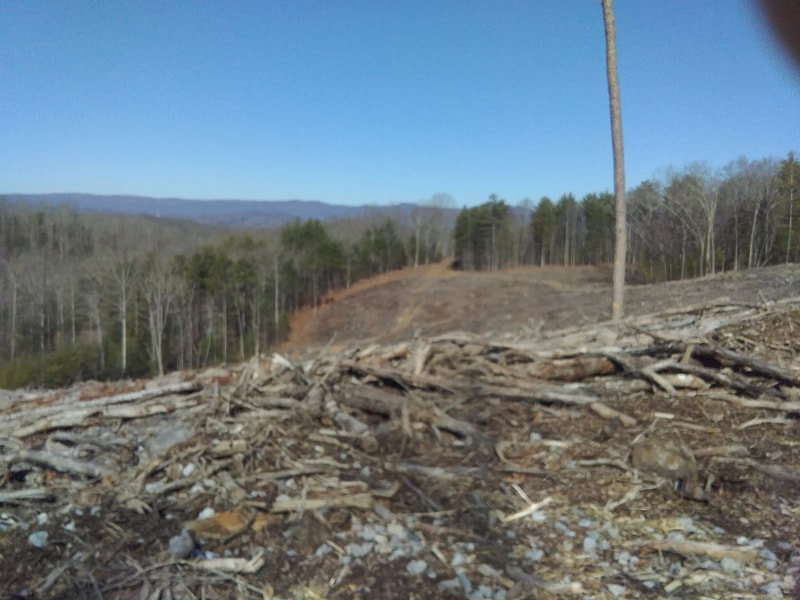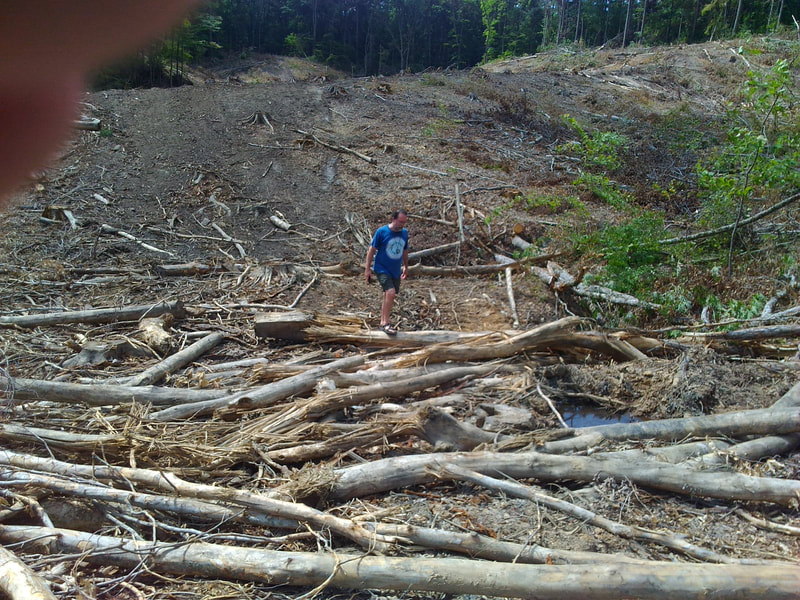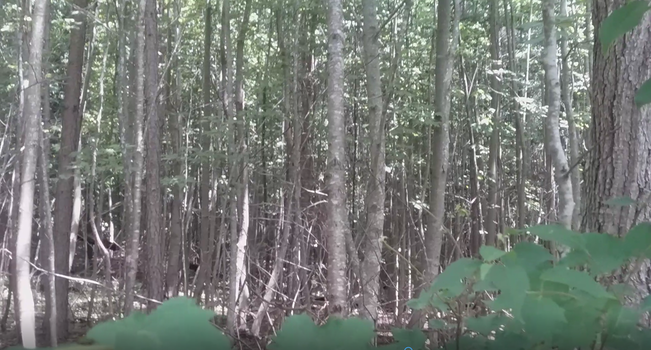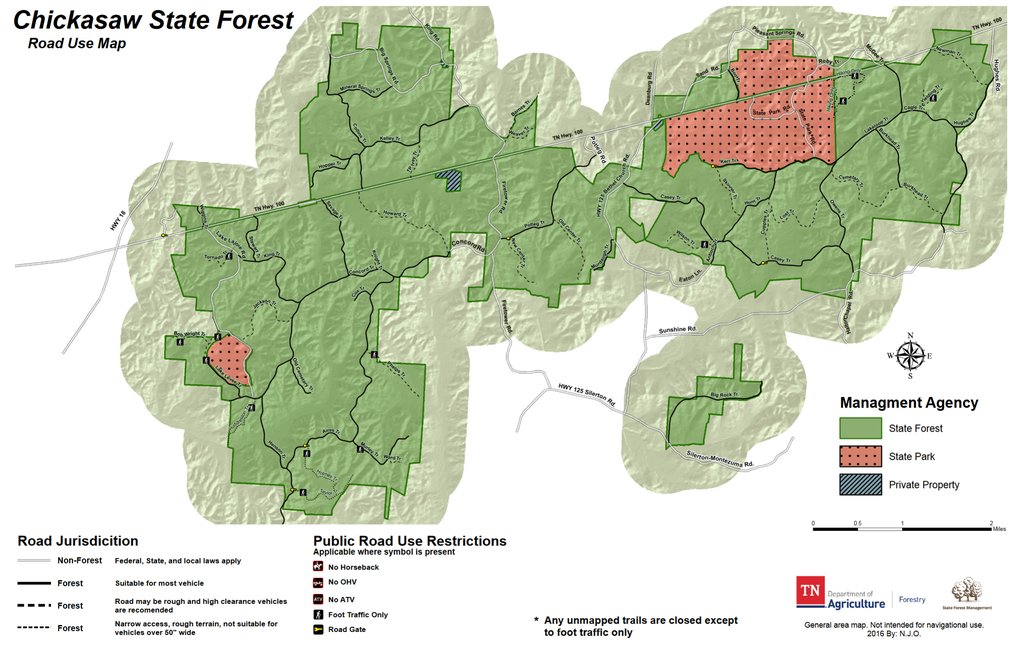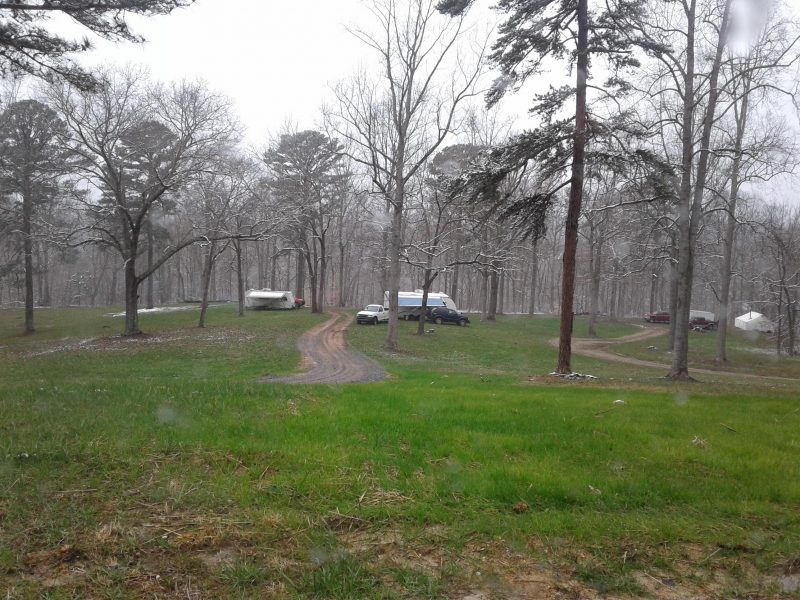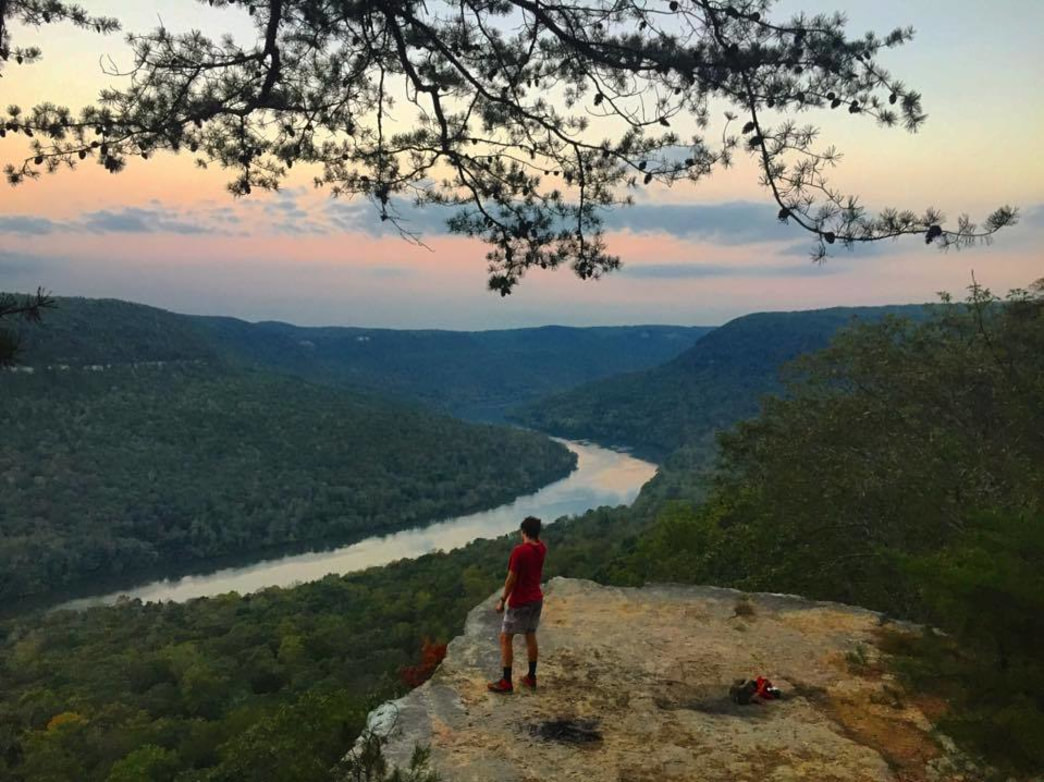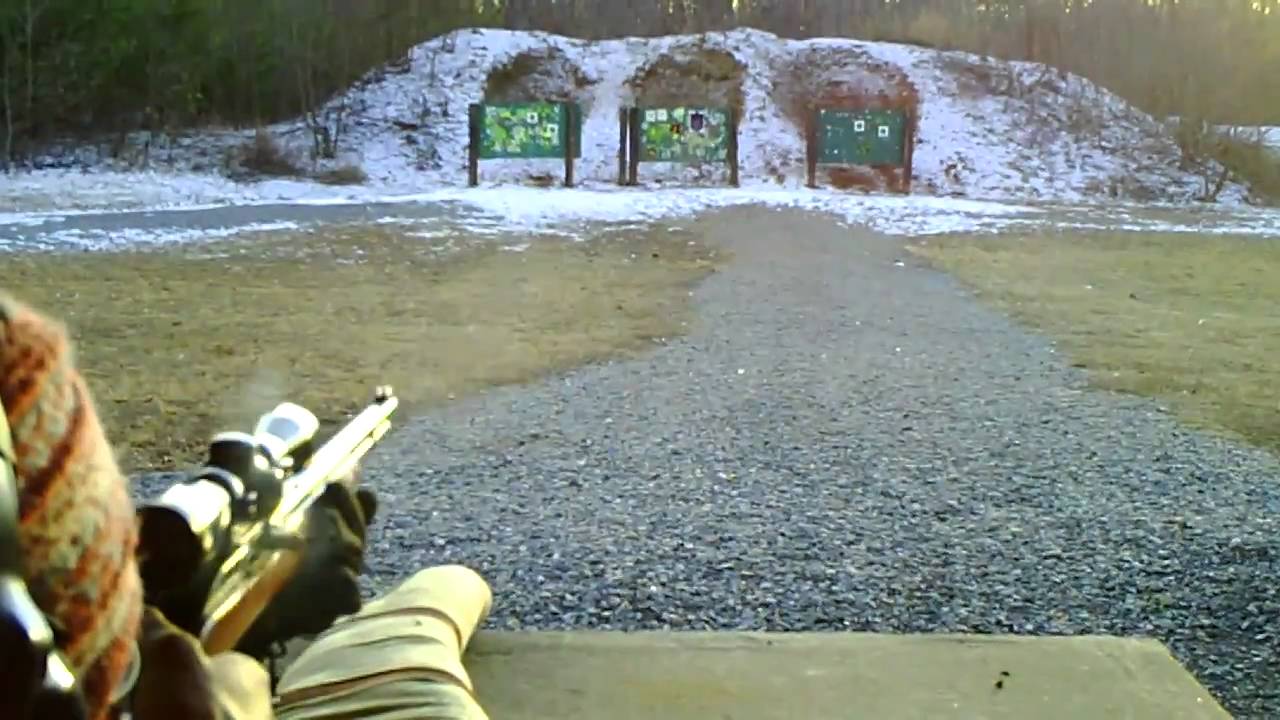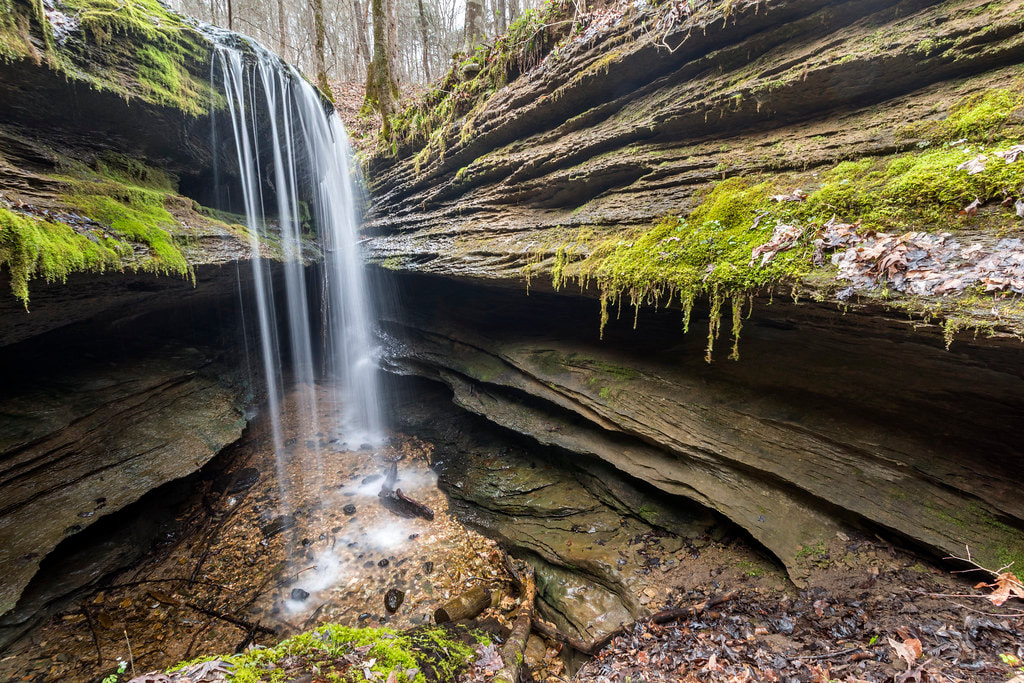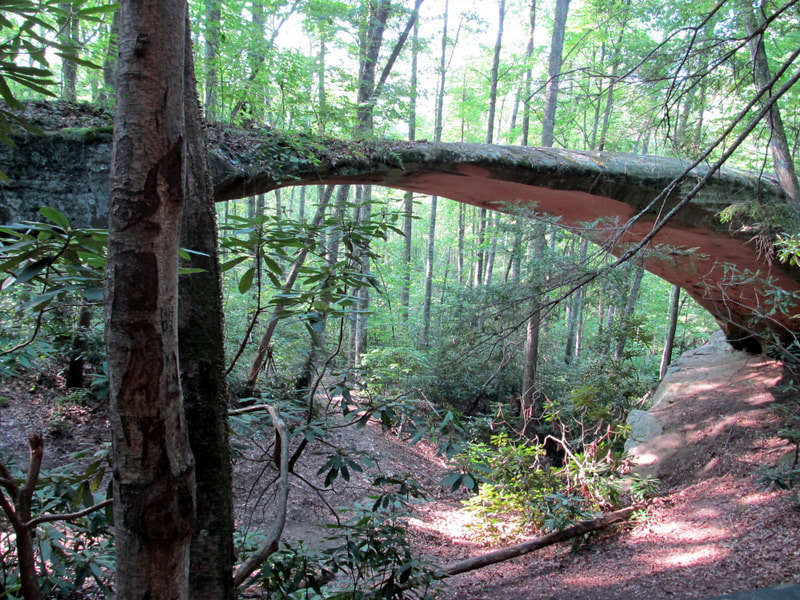Tennessee State Forests
|
Tennessee is blessed to have fifteen state forests distributed across the state. From the glade habitat of Cedars of Lebanon to the Ridge and Valley ecosystem of Chuck Swan, they make a diverse representation of Tennessee's forests.
However, some of these forests suffer from degradation due to heavy commercial logging. While the main state purpose of state forests is to bring revenue to the state and to contribute to forest products, the current timber program faces problems that compromise suitability. Clearcutting and other heavy logging methods that leave few trees are resulting in many once -diverse second growth maturing forests degrading into low biodiversity stands, often into dense thickets of poplar or loblolly. This lowers ecological and recreation values, as well as long-term sustainability from a raw economic standpoint. Click here or on the presentation to see issues affecting some forests like Prentice Cooper, Bledsoe, and Chuck Swan. |
Habitat Degradation Hurts Ecological, Recreation, Wildlife, and Commercial Values
Some of the forests that are undergoing logging, such as Natchez Trace, Bledsoe, Chuck Swan, and Prentice Cooper, have many stands that have been logged that are often shifting to dense poplar, maple, loblolly pine, or Virginia pine that outcompete the mosaic of oaks, hickories, shortleaf pine, dogwood, and many other tree species that make up the native forests of Tennessee. These opportunistic species can outcompete other trees and important forbs from getting established, and results in a stand with lower wildlife value . The state's current action plan focuses mostly on logging practices. While the text of the plan favors even aged systems of clearcutting, shelterwood, and seedtree cuts, management strategies that promote a diverse forest with stands that have less invasive logging methods can be successful. Pioneer Forest in Missouri and long term research at University of Kentucky's forests have shown that a variety of thinning, group selection, and other timber management can be effective in a successful timber program that helps maintain a diverse forest, suppressing the tendency of logged stands to revert to monocultures while promoting younger hardwood tree regeneration for a diverse, multiaged forest community. Considering that many stands in some of the forests are not consistently regenerating a balanced set of species from clearcuts and shelterwood cuts, alternatives should be explored.
A Need for Change: Get Involved
Citizen input will go a long way to helping bring new management ideas to our state lands. Here are some core issues and how you can help.
- Of the fifteen state forests in Tennessee, logging is also currently happening at Prentice Cooper, Bledsoe, Standing Stone, Chickasaw, Natchez Trace, and Chuck Swan, with the latter two having multiple sales. There are 17 hardwood timber sales and 6 pine timber sales happening overall across these above-listed forests this year. Prentice Cooper plans 131 acres of logging in a timber sale this summer across 5 stands. Chuck Swan has 259 acres of logging this year across multiple sales, while Natchez Trace has 379 acres of hardwood and pine timber sales planned.
|
|
A five year view of a cut at Prentice Cooper from 2014-2019
In some state forests, many areas, such as this stand in Prentice Cooper cut 15-20 years ago, revert from mixed hardwoods with a healthy, diverse understory to being dominated by poplar and loblolly/virginia pine.
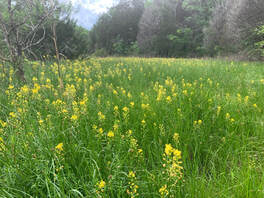
- Fortunately, the agency has wisely ensured that some forest areas, like Prentice Cooper's steeper slopes and parts of Cedars of Lebanon, receive some protections in certain areas due to sensitive habitats or the presence of rare species. It would be great for all of the districts to designate areas of importance for scenic, educational, and ecological values.
The forests would benefit from long-term planning that deals not only with timber production, but also focuses on recreation, biodiversity, and environmental education. This is an excellent time for the state to reach out to the public for more feedback and ideas on future management of state forests.
The agency designates a portion of
Cedars of Lebanon as a State Natural Area.
- The current state managment plan says, "Although the goal is to bring the forest into a more balanced age-class distribution, it must be done systemically to avoid excessive harvesting in the shortterm on any one forest. This will allow forest managers to maintain mature to over-mature stands in certain places even on regulated acres." While some forest areas have a broad range of ages, many others lack much in older, mature age classes, and are often made up mostly of stands of 60 yrs or less, with remaining older stands slated to be cut. Not only are many hardwoods like white oak capable of living for well over 200 years (though some would call older trees "decadent"), countless studies show the many benefits of older, mixed age forests: high species diversity, presence of valuable denning/habitat trees, and high carbon storage.
- Expanding seed banks of loblolly pine and poplar from heavy logging add to the difficulty of other species being able to reclaim a logged site on several forests.
- Bledsoe suffers from many loblolly and virginia pine stands with low biodiversity from years of logging.
- Natchez Trace and Chuck Swan continue to face heavy logging that could have long term impacts not only to biodiversity, but soil and water quality. Chuck Swan’s steeper slopes and often fragile soils are a particular concern.
- It is commonly stated that clearcuts provide “early seral habitat” for game species like deer and turkey. However, several forests like Prentice Cooper and Bledsoe have substantial permanent wildlife openings that can support good game populations. . Mature forest stands also greatly improve game and other wildlife habitat. With an increased focus in the ecological community on rare open habitats, the state could consider using some of wildlife plots for restoring uncommon and underrepresented wildflowers/forbs (which are typically dispersed by wildlife).
- Franklin has numerous poplar-dense stands. Coppice-sprouted trees are often unhealthy and can be vectors for disease.
- If logging is to continue on state forests, more sustainable methods need to be explored. Well known research forests like Pioneer in Missouri and the University of Kentucky are have success with other harvesting methods that keeps an intact forest structure with a balanced distribution of native trees. This would be a good time for the state to undergo some monitoring and evaluation of the timber program to see what is and isn’t working. The productivity of the land can be measured in more than a snapshot view of a timber cut. Crowded stands with a narrow range of species are less likely to produce quality merchantable timber in the future, while lowering biodiversity, wildlife, and recreation values.
- Compared to some land management agencies, the State Forests have not made substantial use of herbicides. We request that this policy continues.
- Currently, the agency has to follow a policy where its management pays for itself i.e. the state does not provide adequate funding. This places tremendous pressure for quick, short term yield. Managers need better support from the Legislature.
- As many parts of Tennessee have state forests as the main repository of public land, there should be a plan for forest management that includes environmental educational opportunities, biodiversity, and protection of sensitive habitats, older forest stands. Timber production can work with these values at a landscape and stand level.
Statement on Vandalism and Theft at Franklin State Forest- July 2024
Tennessee Heartwood wishes to express its dismay at the recent acts of vandalism that took place at Franklin State Forest. The Tennessee Division of Forestry has reported that some time last weekend, vandals committed very significant damage to agency equipment, including TDF dozers and a transport truck. There was also significant theft of agency equipment. Threatening messages were also spray painted on the equipment. Among other things, the agency serves in the capacity of helping fight forest fires with this equipment, as well as maintaining public access roads. The loss of this equipment not only harms Tennessee taxpayers, it also undermines these public services and access to public lands.
This has forced the agency to effectively close the forest for the second time in a year due to unlawful behavior. This prevents the public from being able to use this wonderful forest and interferes with the success of important ongoing ecological research being conducted there, not to speak of the agency being able to do its multi-faceted mission. We treasure Franklin and the rest of the fifteen State Forests that Tennessee is blessed with. At Tennessee Heartwood’s initiative, conservation groups, agency staff, and scientists came together at our State Forests Summit last Fall to work towards a future for State Forests grounded in sustainable forestry and science. We support a safe environment for the agency and the public alike.
This has forced the agency to effectively close the forest for the second time in a year due to unlawful behavior. This prevents the public from being able to use this wonderful forest and interferes with the success of important ongoing ecological research being conducted there, not to speak of the agency being able to do its multi-faceted mission. We treasure Franklin and the rest of the fifteen State Forests that Tennessee is blessed with. At Tennessee Heartwood’s initiative, conservation groups, agency staff, and scientists came together at our State Forests Summit last Fall to work towards a future for State Forests grounded in sustainable forestry and science. We support a safe environment for the agency and the public alike.
